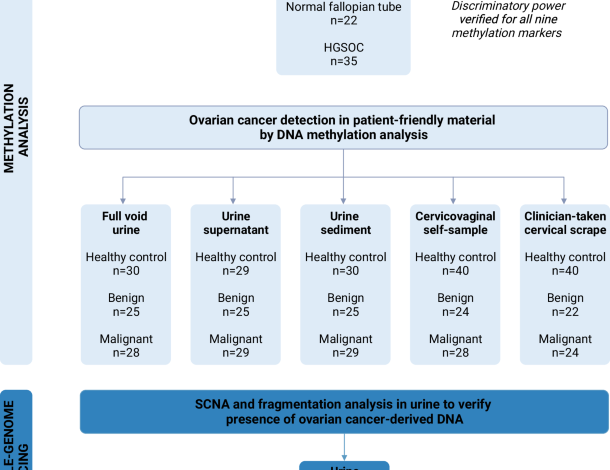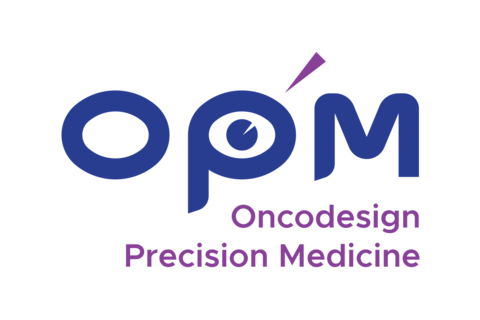
How did Buro Happold shape the future of a new medical school?
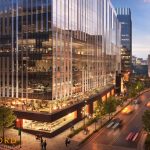



Buro Happold strategy specialists were key advisors for a new medical school in Charlotte, North Carolina. Learn how our experts shaped the future of Wake Forest University School of Medicine.
Our strategy and operating model design advisors, working in partnership with Wake Forest University School of Medicine and Atrium Health, developed the spatial and facilities vision for a keystone building within a new innovation district set to inspire the regeneration of the surrounding area.
Our unique position as advisors with a multidisciplinary blend of technical expertise and business understanding enables us to deliver remarkable, differentiated, and memorable experiences that attract end users. This is exactly what happened when our advisory team provided strategic and operating model design services for Wake Forest University School of Medicine.
Advising Wake Forest University School of Medicine
Buro Happold strategy specialists were key advisors for a new medical school in Charlotte, North Carolina, working in partnership with Wake Forest University School of Medicine and Atrium Health (now Advocate Health). By aligning people, programs, systems, services and operations with user requirements, we develop engaging, equitable and sustainable experiences for users – and at Wake Forest University School of Medicine, we developed design briefs that defined and created a shared vision, quantifying their needs and organizing their spaces for two signature buildings.

The first is the Howard R. Levine Center for Education, which will house the school of medicine, Advocate Health headquarters and Carolinas College of Health Sciences. The second will be a multi-tenant research and collaboration building, home to the North American arm of the internationally renowned surgical training institute, IRCAD.
The new medical school and research and training facilities will be anchors for a new innovation district in Charlotte: ‘The Pearl’. The ecosystem surrounding this innovation district will be grounded in research and academia.
This is a really impactful project, not just for Charlotte, but for the region and for the future of medical providers.
Allan Donnelly, principal at Buro Happold
We provided the visioning and strategic planning, and space programming and planning services for the new medical school and simulation and training facilities, working with the leadership of the university and Atrium Health to craft visions for the buildings. This happened at the same time as the development of the academic program, which was an opportunity to shape the building to suit user needs.
Critical was the building of consensus among the leadership teams around the future of the building, aligning the many key stakeholders towards a shared view of what successful user experience and facility operations would look like.
Allan Donnelly is principal within the Buro Happold advisory team. He said, “This is a really impactful project, not just for Charlotte, but for the region and for the future of medical providers. “It’s going to create a pipeline between the community and the students who come into medical education, changing the make-up and diversity of the future of health care providers.”
The school will be the largest educator of medical professionals in North Carolina and will provide a dedicated focus on opportunities for underrepresented communities, focusing on diversity of learners. Our involvement for the new medical school began as Wake Forest University School of Medicine entered a new strategic partnership with Atrium Health. It was critical for these new partners to be aligned on a vision for the future. That’s where our expert advisors came in.
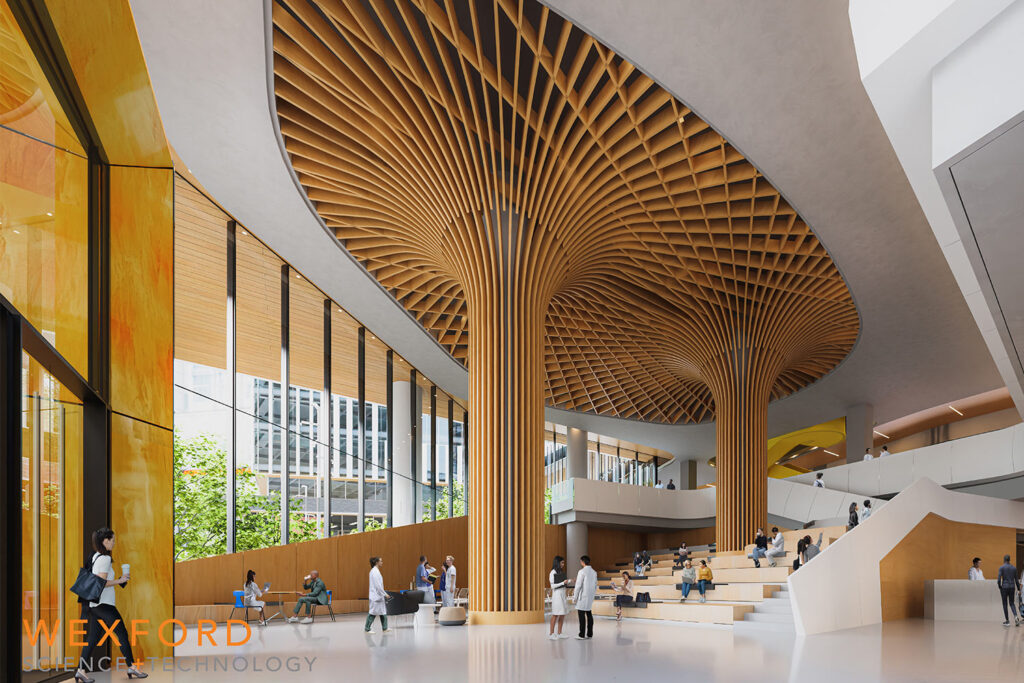
Why was this needed?
The medical school and innovation district will play a central part in the regeneration and revitalization of the Second Ward neighborhood of Charlotte. North Carolina is a fast-growing state, with large influxes of residents in recent years. At the same time, there has been a lack of funding in medical and health care education in the region, leading to a disparity between the number of people within the state and the number of healthcare providers in the region.
The establishment of the economic engine of an innovation district, of which the medical school will be an anchor institution, was a condition of the merger between Wake Forest University School of Medicine and Atrium Health. The time is right for a science and research hub for North Carolina, and there are practical reasons, too. Allan Donnelly said, “In the United States there is a lack of health care providers, and especially health care providers from a truly diverse set of people, representing the patients they care for.
“That means there is a big emphasis in developing programs to recruit and retain a representative population of students. “The medical school will be a pipeline for bringing doctors and nurses into the region.”
As expert advisors, we have the ability to gain a holistic understanding of the always-numerous factors that need to be considered when creating engaging spaces for students and users: in this case, these include health disparities and lack of upward mobility.
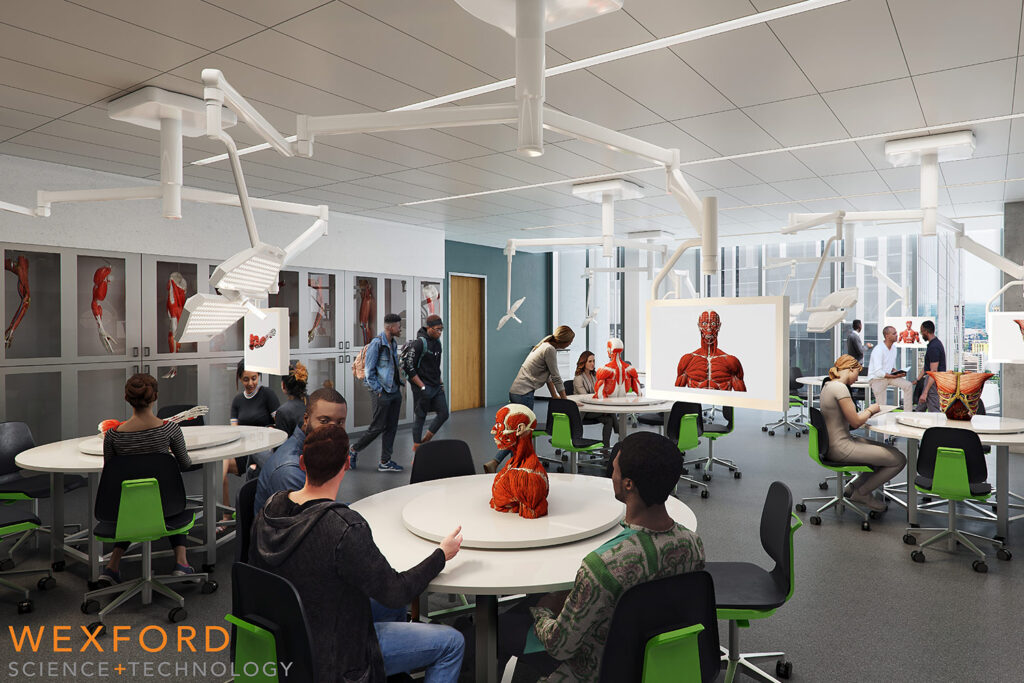
Our approach
Our advisory teams drive better development, growth and change – improving efficiency and user experience through space programming and planning. This was evident at Wake Forest University School of Medicine, exploring models for community activation and industry partnership, and building consensus in a shared vision and a roadmap for how to get there.
Anywhere we can design for human experiences is where we can offer value. Whenever there is an experiential element… that is when we deliver.
Allan Donnelly, principal at Buro Happold
We work on stakeholder engagement in a variety of ways. Here, we held interviews with senior leaders to understand what they wanted the new medical school to deliver. We also held focus groups with students and staff. The vision statement and set of guiding principles that were honed were: “To train diverse and empathetic health professionals, who are active in improving outcomes for all, by fostering innovation, interprofessional collaborations, and service to community, using experiential learning spaces that promote intentional connections.”

Our involvement also included clarifying precise requirements, a service that assists clients to grow only as they need to. Allan Donnelly said, “Targeting investment, by being able to establish precisely what needs to be built, and no more, is extremely valuable. We help clients work out what that needs is, before they get to the design process.”
What value did we provide?
Much of our strategic advisory work begins at the very start of a project. This brings challenges – but opportunities, too. Fundamental in our approach is how we connect strategy with operations. This always includes the ability to be nimble and flexible.
Optimizing the delivery of the required vision and insight to our clients requires strategic, considered thinking, and a clear degree of technical experience. We connect insight with implementation, providing outcomes that more efficient, impactful and transformative. Our work required real agility and the ability to deal with uncertainty, fostering innovation.
We are confident in the value that we can provide to clients. It varies according to project (other value-add services include increasing efficiency, optimizing existing buildings, decision support and establishing the viability and feasibility of a potential project) but it is always about creating engaging, equitable and sustainable user experiences.
Allan Donnelly finished by saying, “Anywhere we can design for human experiences is where we can offer value. Whenever there is an experiential element… that is when we deliver.”
Strategy and operating model design advisory offering
Buro Happold works to address major challenges in an ever-evolving world.
Our specialists offer expertise across a wide range of areas that support our clients and their unique needs. We believe that clients benefit from the expertise and experience of partners who understand not only their business, but crucially, the engineering behind it.
Buro Happold’s strategy specialists, within our wider advisory offering, align people, projects, programs and places, as well as systems, operations and services, for the development of pre-design materials and tailored solutions for clients. Traditionally, this work has been centered on higher education institutions across the United States, but an increasing focus on advisory offerings for other sectors and regions means this skillset is being opened up elsewhere
Learn more about our strategy and operating model design advisory offering.

Ethel Purdy – Medical Blogger & Pharmacist
Bridging the world of wellness and science, Ethel Purdy is a professional voice in healthcare with a passion for sharing knowledge. At 36, she stands at the confluence of medical expertise and the written word, holding a pharmacy degree acquired under the rigorous education systems of Germany and Estonia.
Her pursuit of medicine was fueled by a desire to understand the intricacies of human health and to contribute to the community’s understanding of it. Transitioning seamlessly into the realm of blogging, Ethel has found a platform to demystify complex medical concepts for the everyday reader.
Ethel’s commitment to the world of medicine extends beyond her professional life into a personal commitment to health and wellness. Her hobbies reflect this dedication, often involving research on the latest medical advances, participating in wellness communities, and exploring the vast and varied dimensions of health.
Join Ethel as she distills her pharmaceutical knowledge into accessible wisdom, fostering an environment where science meets lifestyle and everyone is invited to learn. Whether you’re looking for insights into the latest health trends or trustworthy medical advice, Ethel’s blog is your gateway to the nexus of healthcare and daily living.
